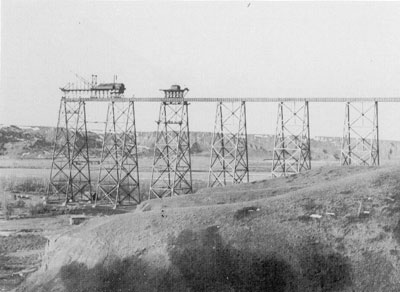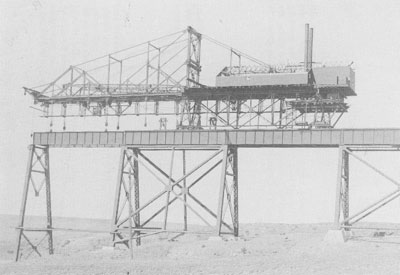CPRail
High Level Bridge
Lethbridge, Alberta
| Terri Meyer Boake BES BArch MArch LEED AP Associate Professor :: Associate Director :: School of Architecture :: University of Waterloo |
|
CPRail
High Level Bridge
|
Project Information: |
|
| The railway bridge that crosses the Oldman River in Lethbridge is the longest of its type, at 1.6 kilometres from end to end. It has functioned successfully for almost 100 years. The following information is excerpted from "The C.P. Rail High Level Bridge at Lethbridge" by Alex Johnson, Occasional Paper No. 37, Lethbridge Historical Society, P.O. Box 974, Lethbridge, Alberta, T1J 4A2, 2002. The purpose of the bridge was to straighten the track and shorten the distance between Lethbridge and MacLeod. Up to this point, the bridges constructed in the west had been of wooden timbers. The design chosen for this bridge was a steel viaduct consisting of 44 plate girder spans 67 feet 1 inch long, 22 plate girder spans 98 feet 10 inches long, and one riveted deck lattice truss span 167 feet long, carried on 33 rigidly braced riveted steel towers. Each tower consisted of two bents, the high bents being No. 23 to 56, inclusive. The towers were designed with a batter of one-to-six which gave ample spread at the base of the towers to keep the maximum uplift due to wind forces (which are extreme in southern Alberta) within reasonable limits. The structure was designed to meet the CPR steel bridge specifications for 1905. A specially constructed series of erection travellers were used to erect the steel. The main traveller was made up of two principal trusses 207 feet long, spaced 16 feet apart. The cantilever portion of the truss could reach 116 feet. |
|
 |
 |
These images are for educational use only and may not be reproduced commercially without written permission. tboake@sympatico.ca |
Updated September 25, 2005